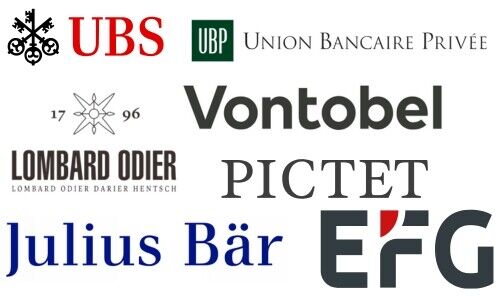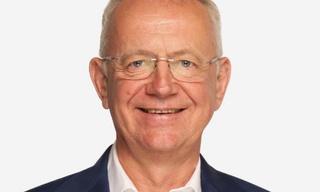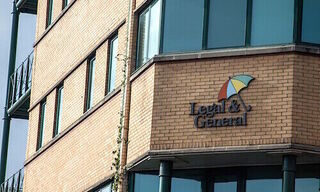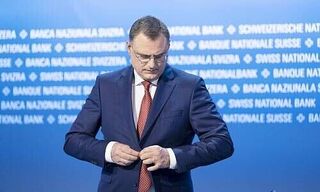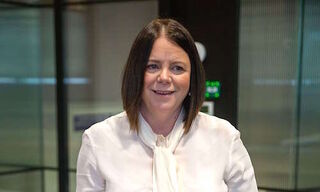A large part of the 2024 reporting season has come to an end: finews.asia compares the performance of the major Swiss private banks.
Global market conditions were exceptionally favorable last year. In particular, the performance of the stock markets – with the MSCI World Index delivering a return of 24.81 percent including dividends – should have ignited a fireworks display among the Swiss private banks.
How have the Swiss private banks fared this year? Among the larger institutions – each managing over 100 billion Swiss francs ($111 billion) – are the publicly listed UBS, Julius Baer, EFG and Vontobel as well as the privately held Pictet, Lombard Odier and Union Bancaire Privée (UBP).
1. Assets under Management
The most important foundation for a private bank’s success is its assets under management. It is from these that the potential to generate revenue from commissions or other services arises.
Below, we rank the banks by the relative change compared to the end of 2023:
- Julius Bär: Assets under Management (AUM) increased from 427.4 billion francs to 497.4 billion (up 16.4 percent).
- EFG: The private bank achieved AUM growth of 23.3 billion francs, reaching 165.5 billion (up 16.4 percent).
- Pictet increased its AUM by 14 percent, reaching a new total of 724 billion francs.
- Vontobel saw its Private Clients’ AUM rise from 98 billion francs to 111 billion (up 12 percent).
- Lombard Odier: The bank achieved an 11.0 percent increase, managing a total of 327 billion francs by the end of 2024 (the group's client assets grew by 11 percent to 325 billion Swiss francs).
- UBP’s AUM grew by 10.1 percent, reaching 154.4 billion francs.
- UBS: The value of invested assets in Global Wealth Management increased from $3.9 trillion to $4.2 trillion (up 6.6 percent), while fee-generating assets grew by 9.3 percent to 1.8 trillion by the end of 2024. However, it should be noted that UBS reports its figures in dollars; when converted into Swiss francs, the increase is 18 percent for the fee-generating assets and 15 percent for total AUM.
2. Net New Money
Net new money – the difference between inflows and outflows – is an important metric for a bank’s competitiveness in generating new client relationships. Although there is no universally standardized method for measuring it, this figure is widely regarded as a key indicator of competitiveness.
The top 6 Swiss private banks delivered the following net new money performance, ranked by percentage growth compared to the end of 2023:
- EFG positions itself as the net new money leader with 10.1 billion francs, equivalent to 7.1 percent.
- Vontobel reported net new money of 4.6 billion francs in its Private Clients, which represents 4.7 percent of its AUM as of the end of 2023.
- Julius Baer reported net new money of 14.2 billion francs (3.3 percent).
- UBS recorded «net new assets» in Global Wealth Management amounting to $96.7 billion – corresponding to 2.5 percent of its AUM as of the end of 2023.
- Pictet’s net new money amounted to 11 billion francs or 1.7 percent.
- UBP published a figure of 1.7 billion francs in net new money for private clients (1.1 percent).
- Lombard Odier refers to «positive» net new money in its 2024 annual results communication, though it provides no further details.
Revenue and Costs
How much operating income or revenue were the banks able to generate based on their AUM? And what were the costs relative to that? The cost/income ratio provides insight into the profitability of the core business. Here is the ranking:
- UBP: 67.7 percent
- Julius Baer: 70.9 percent
- EFG: 72.1 percent
- Vontobel: The cost/income ratio is not reported separately for the Private Client segment. For the overall bank, it stood at 74.7 percent in 2024.
- Pictet: No figures for the 2024 cost/income ratio are available yet. In the previous year, it was 77 percent.
- UBS: 79.5 percent
- Lombard Odier: 83 percent
Operating Profit
The ultimate goal of any business activity – including banking – is to generate profit. In terms of year-over-year profit, the top 6 private banks performed as follows:
- Vontobel: The overall bank (Private Clients and Institutional Clients) recorded a pre-tax profit of 266.1 million francs, 34 percent higher than the previous year.
- Pictet increased its profit by 15.0 percent to 665 million francs.
- The UBP group raised its profit by 15 percent to 257.4 million francs.
- UBS (PWM): An increase in pre-tax profit from $3.45 billion to $3.94 billion (up 13.9 percent).
- Julius Baer: Pre-tax net profit amounted to 1.050 billion francs, an increase of 11 percent over the previous year.
- EFG: Profit reached 321.6 million francs, 6.1 percent higher.
- Lombard Odier: With a 19 percent decrease compared to the previous year, the bank achieved a profit of 179 million francs.
The figures listed above are not comparable in every respect; the differing corporate structures and business areas also affect the structure of financial reporting.
And there are still gaps: J. Safra Sarasin will only present its 2024 figures in early April. In 2023, the bank set the bar very high: with assets under management of 204.3 billion francs, it achieved a group profit of 470.3 million francs and shone with a cost/income ratio of only 46.2 percent.
Also, Edmond de Rothschild, whose AUM stood at 178.0 billion francs in mid-2024, has not yet presented its full-year results.
Read on the following pages how finews.asia assessed the performance of each of the seven banks in the past year.
- Page 1 of 8
- Next >>

